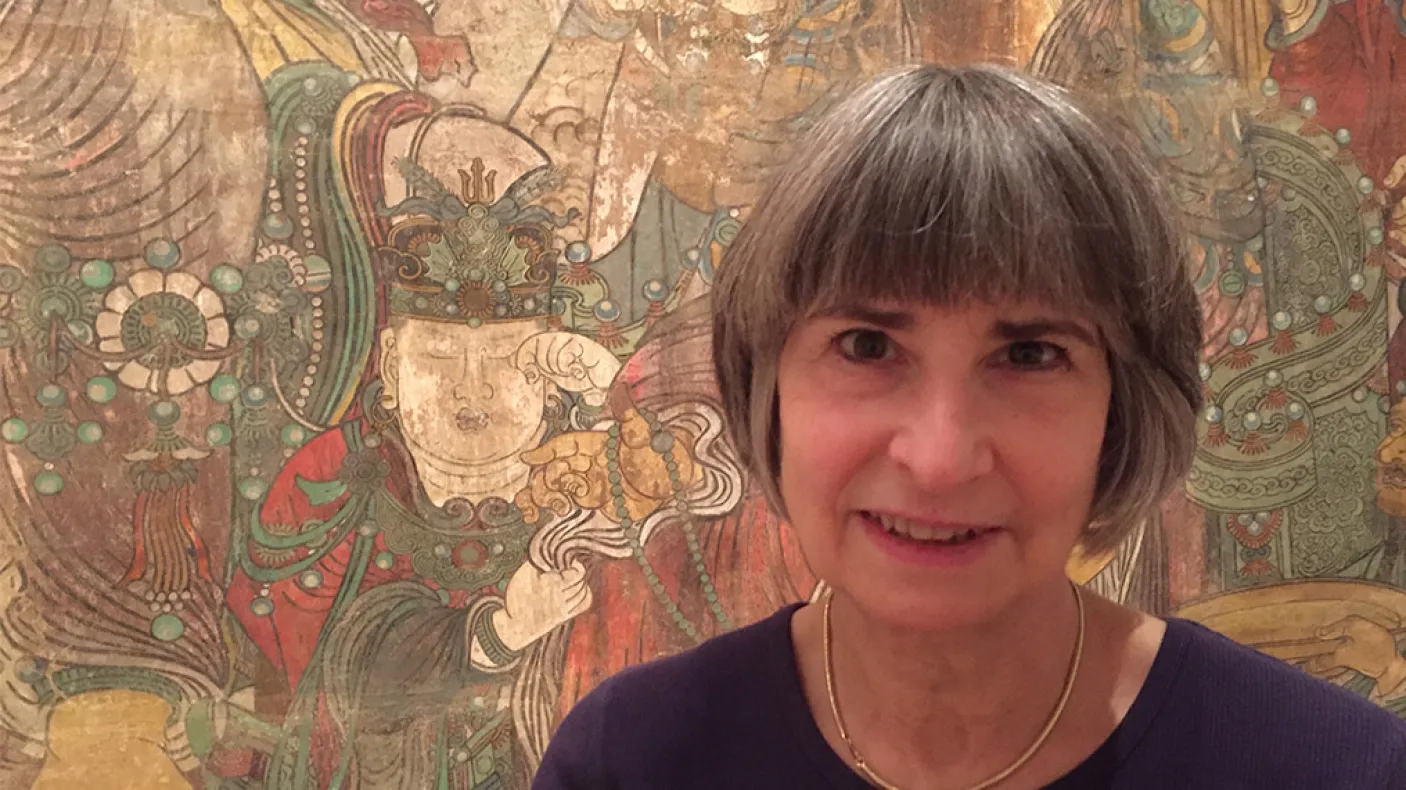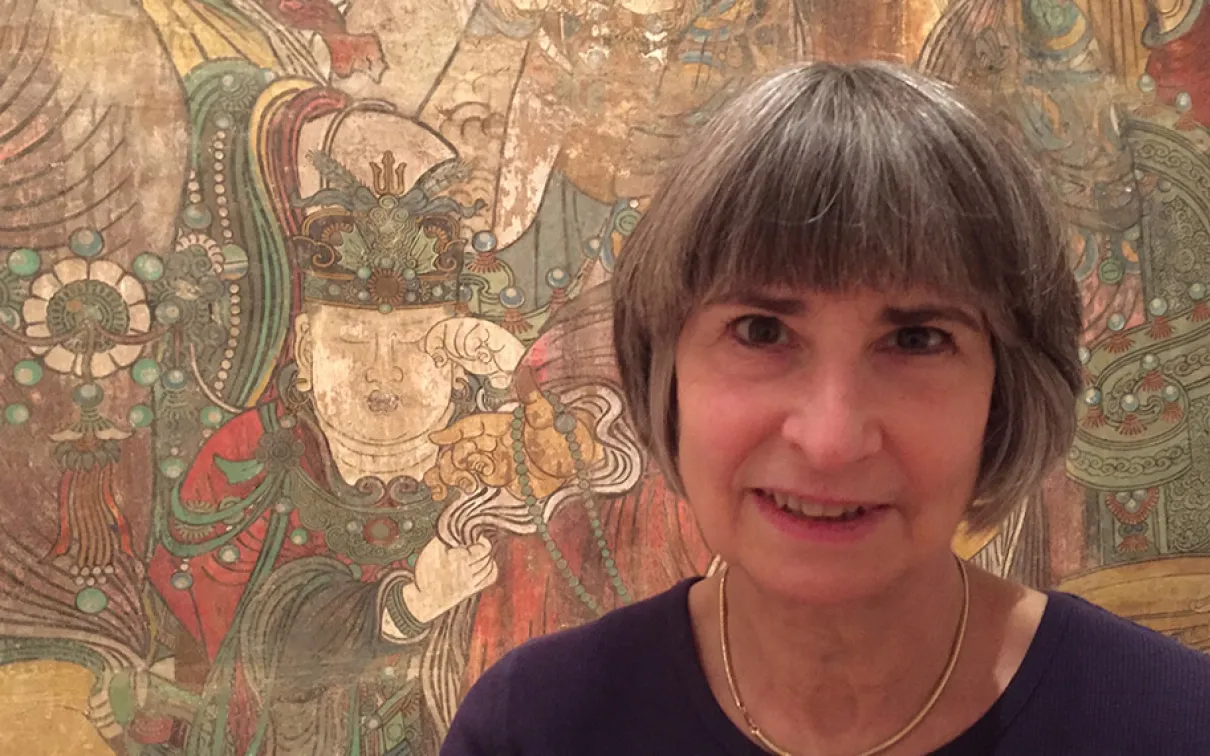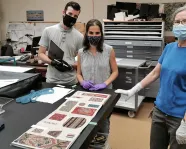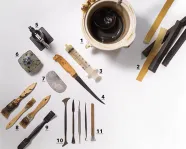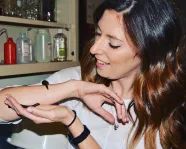Ask ROM Anything: Georgia Guenther
Category
Audience
Age
About
Every Thursday at 10 am on Instagram we chat with a different ROM expert ready to answer your burning questions on a different subject. This time on Ask ROM Anything we are talking to Georgia Guenther. She has been an exhibit artist at ROM for over 40 years, contributing to hundreds of projects across many of the museum’s departments. She works primarily as a sculptor and model maker. It is her job to represent things that cannot otherwise be seen or touched within a museum exhibit, and to provide context, or interpretation for cultural objects and biological specimens. She has made enlargements of tiny organisms and scaled down versions of archaeological sites.
Ask Georgia Anything
Q. How did you get started creating artwork?
A. As a kid I enjoyed making things, and I was also a bit of a junior naturalist. As a young teen, I came to ROM on a school trip and fell in love with the place. I decided I would grow up to make things there. Lucky for me it worked out!
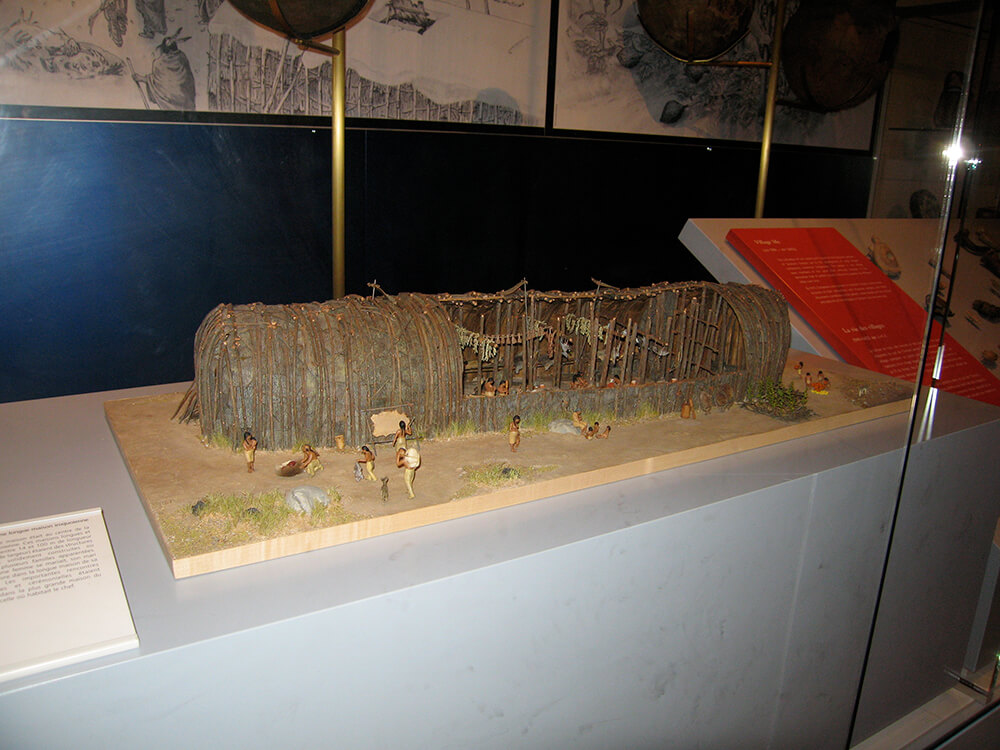
Q. What is your favourite area of the museum’s collection to work on?
A. It is very hard for me to choose. I started out enjoying making models of daily life scenes best, such as the Iroquois long house, but lately I have been doing more biological things and I find I still do appreciate bugs.

Q. Do you have a favourite material to work with?
A. Natural potter’s clay is my all-time favourite material, and I have made several exhibit pieces from clay that have been fired to harden them. However, the material I work in most often is modelling wax. Sometimes the wax is the finished product and sometimes it is translated through the lost wax process into bronze.
Q. How did you get started in the field?
A. Because I wanted to be a museum artist from an early age, I focused on anything I thought would help get me there. I made a habit of visiting the ROM often, and I talked to the staff to find out what I needed to learn. Mostly the answer was to practice. I made lots of things on my own that I thought related to museum exhibits, and thus built up a portfolio. I also managed to get summer student jobs working with the ROM’s artists while I was going to art school.
Q. Do you have a formal art education background? Where and what did you study?
A. I graduated from the Ontario college of Art in the late 1970s. That is now OCAD. I was in the General Studies program, because that way I got to try a bit of everything. It has served me well as an “all purpose” artist at ROM.
Q. Are you usually consulted on projects before they begin, or do you just find ways to make them work?
A. I laugh! Exhibit projects have been under development for months before I get involved. I do not get to choose what I will represent, although occasionally I suggest refinements to an idea. I never say no to a project, but sometimes there must be some negotiation about what is possible within budget and schedule, and what is physically doable. And yes, sometimes it is a challenge to make it work.
Q. If money or strategic priorities were no object, what model would you love to make? What is your dream project?
A. I am intrigued with the idea of making something like a 3D Advent Calendar. That is something that appears at Christmas time and each day from December 1 to Christmas day you get to open a tiny flap on the calendar and see something inside. I am not sure what subject matter I would apply this idea to, but I like the thought of museum visitors being able to interact with a model by opening little doors for different views into another world.
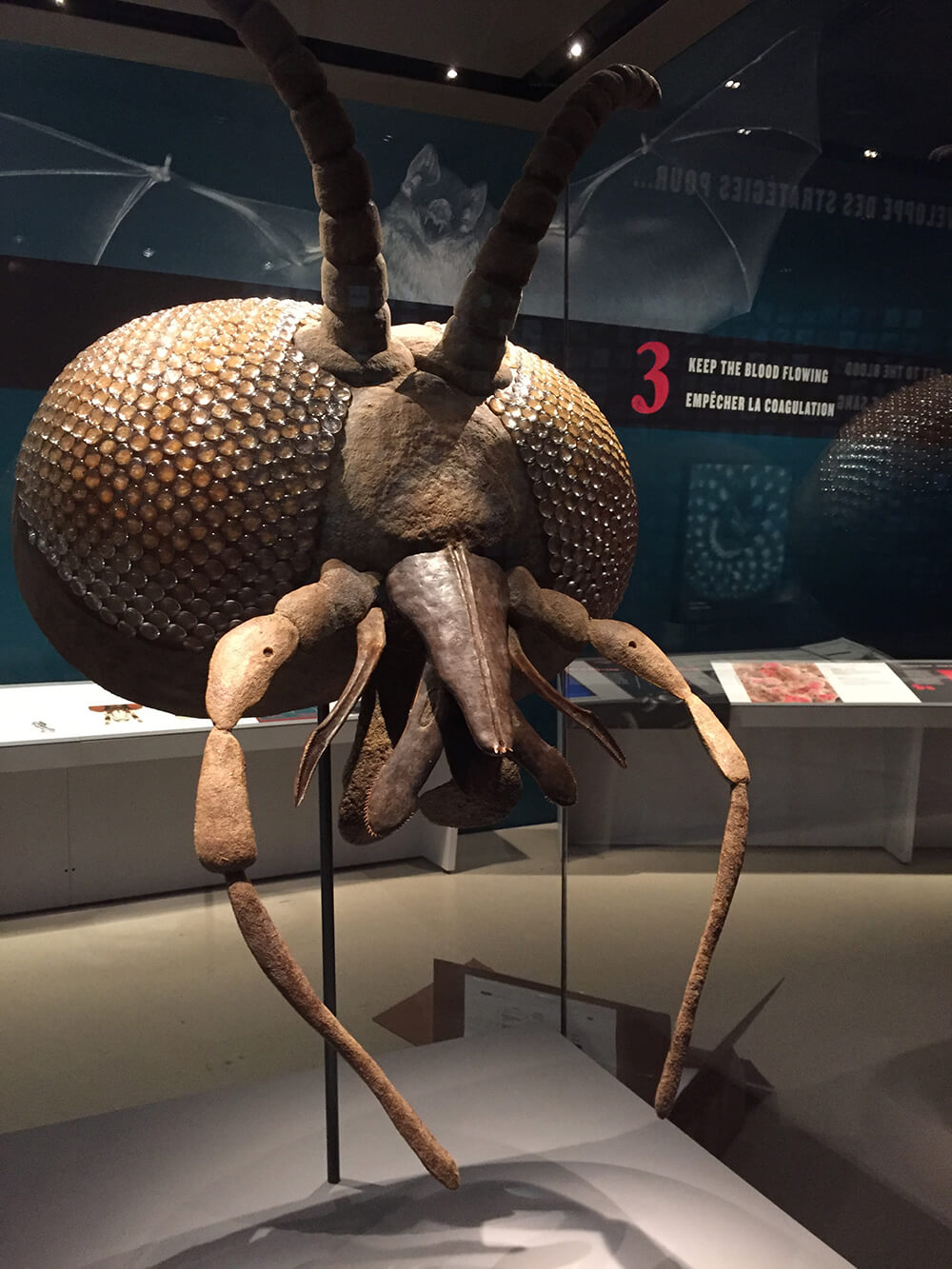
Q. How do you maintain detail when an object is scaled down so far?
A. I love miniaturizing things, and level of detail is something I think about a lot. It is all about creating an illusion. When there is more than one component to a piece, it is especially important that they look consistent in terms of scale and detail. I must decide how far to go. When scaling down I can edit out a level of detail. (Does that little figure really need eyebrows?) It is when scaling upward that it becomes trickier. (Should I include all the hairs on that giant bug’s leg?)

Q. What is the most unusual material you have used to create a model?
A. I once made a miniature garden from marzipan. Here in this photo of a piece of coral that I made using heat sensitive plastic tubing. See if you can figure it out!

Q. What is the most complicated model you have ever made, and how long did it take?
A. I guess I would have to say that was the Blue Whale Brain. It was complicated for two reasons. It has a very convoluted shape which takes quite a while to model, but what made it difficult was not really knowing what a Blue Whale brain looks like! Brains do not preserve well especially inside an animal so big. I had one very old and very small photo of the top view, and a drawing done on board a whaling ship of one side view. Together with my science colleagues I was able to extrapolate. The modelling took some weeks to accomplish.

Q. What project have you enjoyed working on most?
A. One of my favourite projects was for a small exhibit about the ancient Ukraine. I loved making a model of a Neolithic house which included miniature versions of many of the objects in the exhibition, as well as figures engaged in daily life activities.
Q. With the proliferation of 3D scanning of historical landmarks, can we expect to see more virtual reality or replicas in museums?
A. I fully embrace the new technology, and have made some use of it for ROM. I do not know that it will mean “more” virtual reality in museums though. Museums are here to show the real thing, and there is limited space in exhibits to do more than that. There must always be a good reason to make a model or replica. For instance, it could be that the desired object is too big to fit or too small to see, or is too fragile or cannot be preserved, or is partially incomplete, or is an extinct species, or needs to be touchable, or to convey an abstract concept. To make a 3D scan and print there must be something to start with.
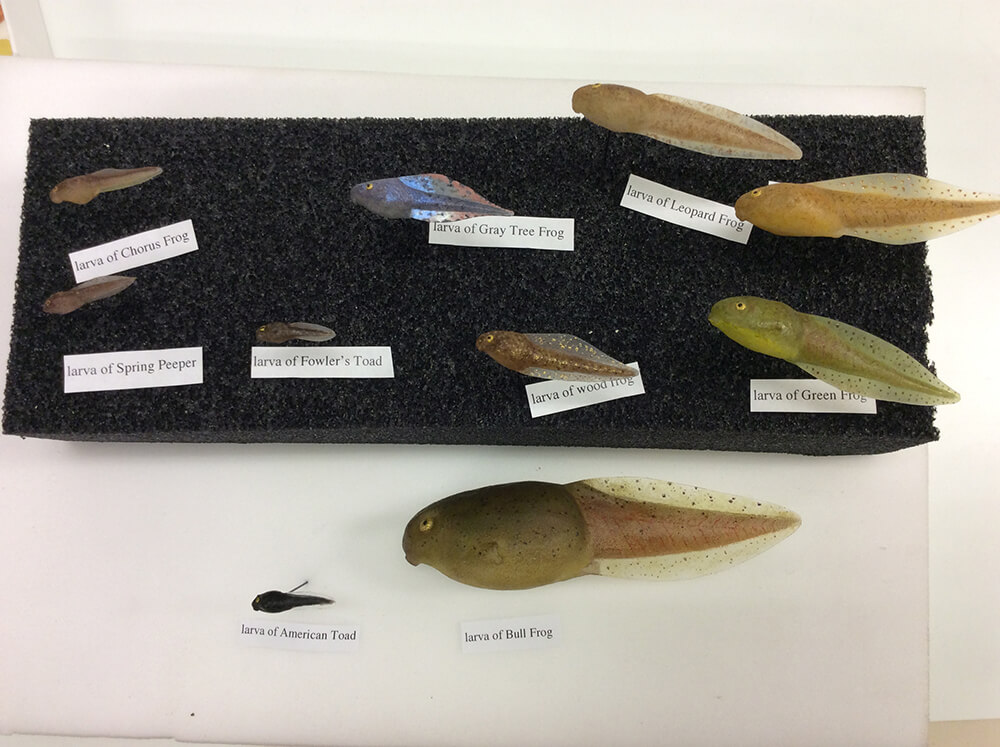
Q. What is something you have made that you are especially proud of? Is there particular object you love that you wish more people see?
A. There are many small models of flowers, amphibians, and invertebrates in our Biodiversity galleries. I hope that visitors take the time to look.

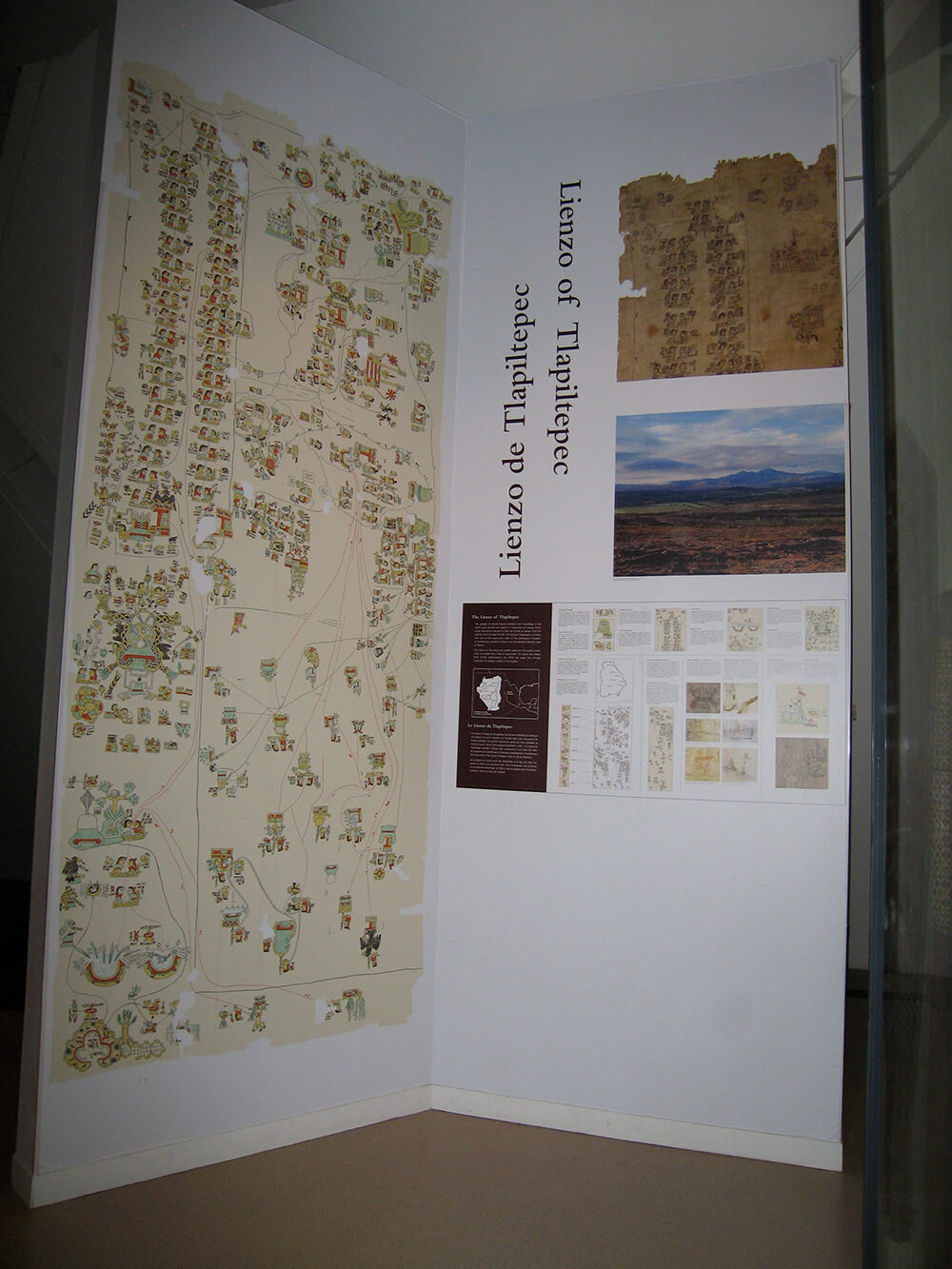
Q. How long do these beautiful pieces take you to create? You are amazing!
A. While there is huge variability in the projects, I have to say that they are all time consuming! There is quite a lot of research and learning that I must go through to understand the subject before I start working. Sometimes I must translate my own prototype into a different material. I am very content to do small repetitive tasks, but they do take time.
Here are two example of drawing projects. Making a replica of a buffalo hide robe for the children’s interactive gallery was relatively quick to do in a matter of days. Meanwhile the intensely accurate digital reconstruction of a faded Mexican textile “document” was something that took months of analysis and work to do.
